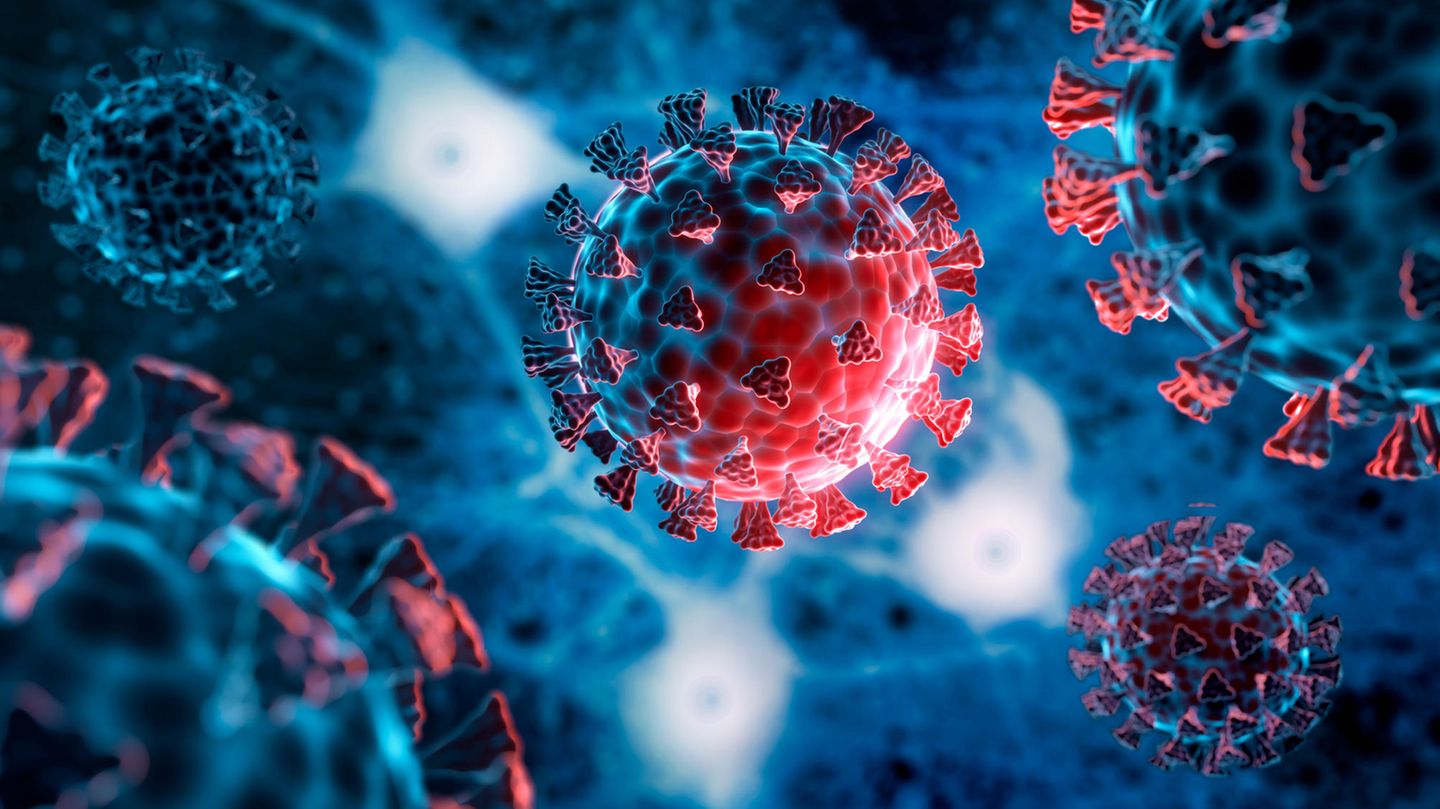The omicron subtype BA.2 is spreading more and more in Germany. According to the Robert Koch Institute, it cannot be ruled out that the number of cases will increase again as a result of BA.2 or that they will decrease less quickly.
The Omikron sub-variant BA.2 has been on the rise in Germany since the beginning of the year. The figures from the Robert Koch Institute (RKI) make this very clear. Just a week ago, 24 percent of new infections were due to this omicron subtype. This shows an increase of 14 percentage points. This means that 38 percent of new infections are now attributable to the BA.2 subtype.
Already at the end of last year, the subtype spread quickly in other countries, for example in Denmark, like the star reported. What we now know about the subtype and what its spread means. The most important questions and answers.
What is the subtype BA.2 exactly?
The BA.2 subline is a subline of the omicron variant. So far, people in Germany have been most infected with subvariant BA.1. According to (WHO) BA.2 differs in its genetic sequence from BA.1. For example in the spike protein, which the virus uses to attack cells in the human body.
Is subtype BA.2 more dangerous than BA.1?
The RKI writes: “In populations with high immunity from vaccinations or infections that have already gone through, no differences in the severity of the diseases were found between the omicron sublines BA.1 and BA.2.” came to the conclusion in an analysis that infections with the Omikorn subvariates BA.1 and BA.2 do not differ significantly in terms of disease severity. The researchers analyzed data from more than 90,000 people who had been infected with omicron between December and January. At that time, BA.2 was already clearly on the rise in South Africa. In an older study, researchers examined the BA.2 subtype in hamsters in the laboratory and found that the disease was more severe than BA.1.
However, neither the RKI’s weekly report nor the study from South Africa are meaningful with regard to the severity of the disease in people who have not yet had a Covd-19 infection or who are not vaccinated. Because in South Africa, a large proportion of the people have either already been infected or have been vaccinated. And the RKI’s statement only refers to a well-immunized population.
Is BA.2 more contagious?
The RKI writes that due to the easy transferability of subtype BA.2, a “significantly slower decrease or renewed increase in the number of cases cannot be ruled out.” He also confirmed that the subtype was easier to transmit as early as mid-February.
“The steady increase in the prevalence of BA.2 in several countries suggests that it has a growth advantage over other circulating variants,” Mads Albertsen, a bioinformatician at Aalborg University in Denmark, tells the journal. A similar picture is also drawn: researchers have examined the infections in households. The result: unvaccinated, vaccinated or already boosted – a person who is exposed to subvariant BA.2 is more likely to be infected than BA.1. However, the study also shows that those who have been vaccinated and boosted pass on BA.2 and infect others somewhat less frequently than with BA.1.
Do vaccinations still protect?
It states: “Vaccine efficacy against symptomatic disease was similar for Omicron’s BA.1 and BA.2 sublines.” According to the report, the vaccinations also protect against severe courses at Omikron. According to the RKI, “no differences in the severity of the diseases were found between the omicron sublines BA.1 and BA.2 in a “population with high immunity through vaccination or surviving infection.”
Can I get infected with BA.2 even though I already had BA.1?
show that although it is possible to become infected first with BA.1 and then with BA.2, the researchers conclude from their data that it rarely occurs. Younger, unvaccinated people in particular could be re-infected with BA.2 after infection with subvariant BA.1.
What does the sub-variant mean for the course of the pandemic in Germany?
How exactly the situation will develop depends on various factors and not just on the virus variant. For example, the frequency of contact due to upcoming loosening or moving meetings outside when temperatures are spring-like. As already mentioned, the RKI writes in its weekly report that due to the easier transferability of BA.2 “a significantly slower decrease or renewed increase in the number of cases cannot be ruled out. An important factor for the further course is how strong infection-relevant contacts are in the context of the planned easing increase.”
The modeler Kai Nagel and his team at the TU Berlin have sketched out various scenarios. In the best case, the omicron wave with subtype BA.2 would at most reach the level of the BA.1 wave of mid-February. In the researchers’ most negative scenario, the BA.2 wave would be 2.5 times more violent than the wave with subvariant BA.1. In the researchers’ model, this would be the case if leisure activities were greatly increased and a previous infection with BA.1 did not protect well against the subtype BA.2, i.e. there is very low cross-immunity.
Source: Stern



